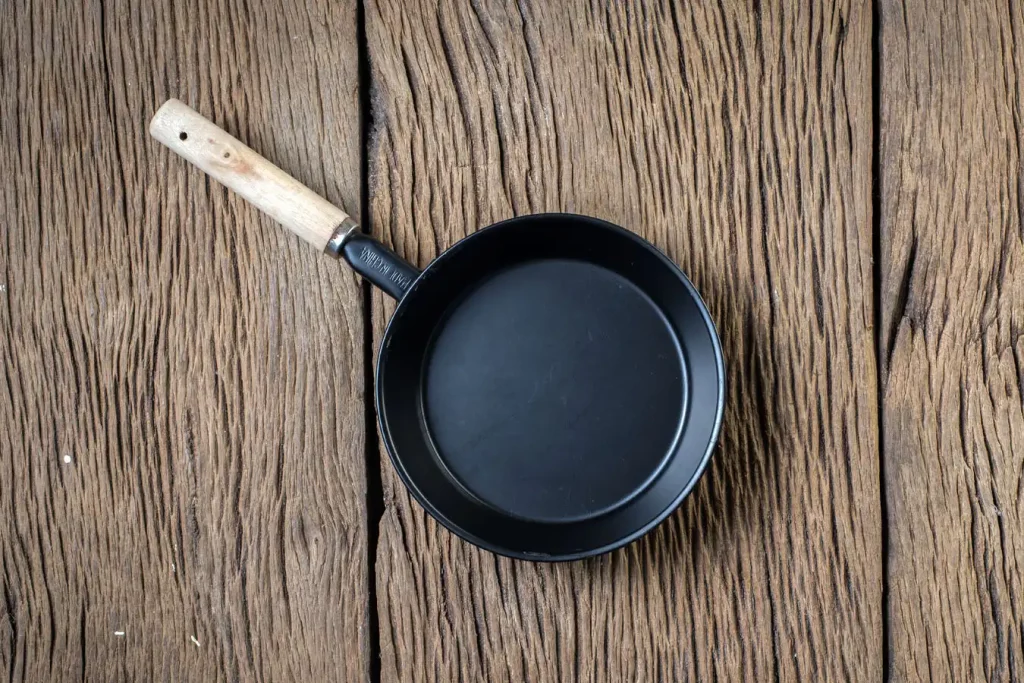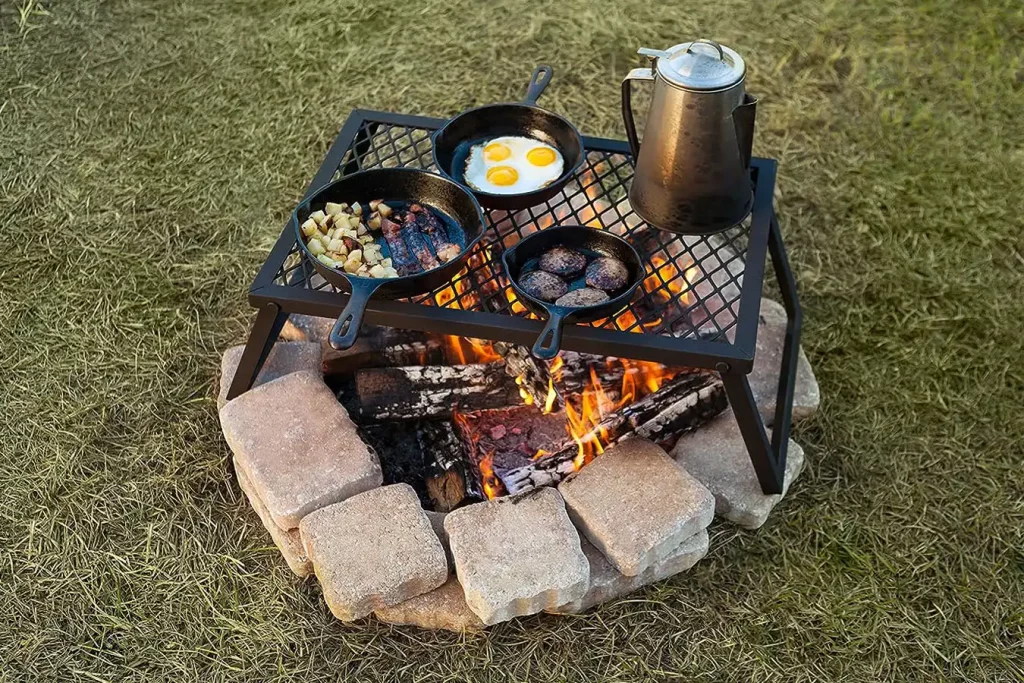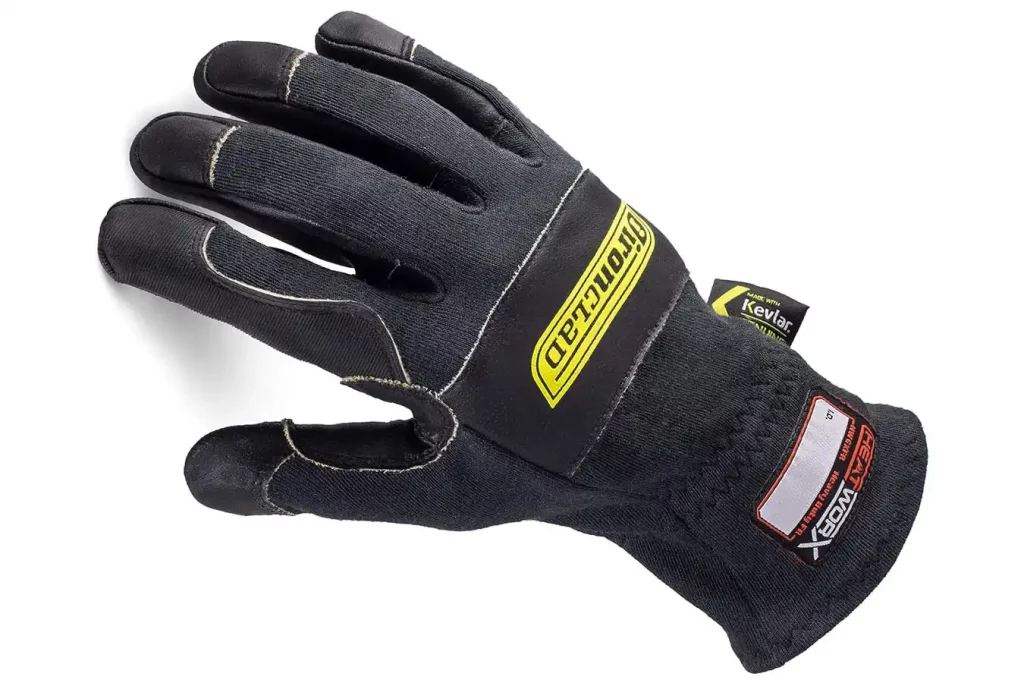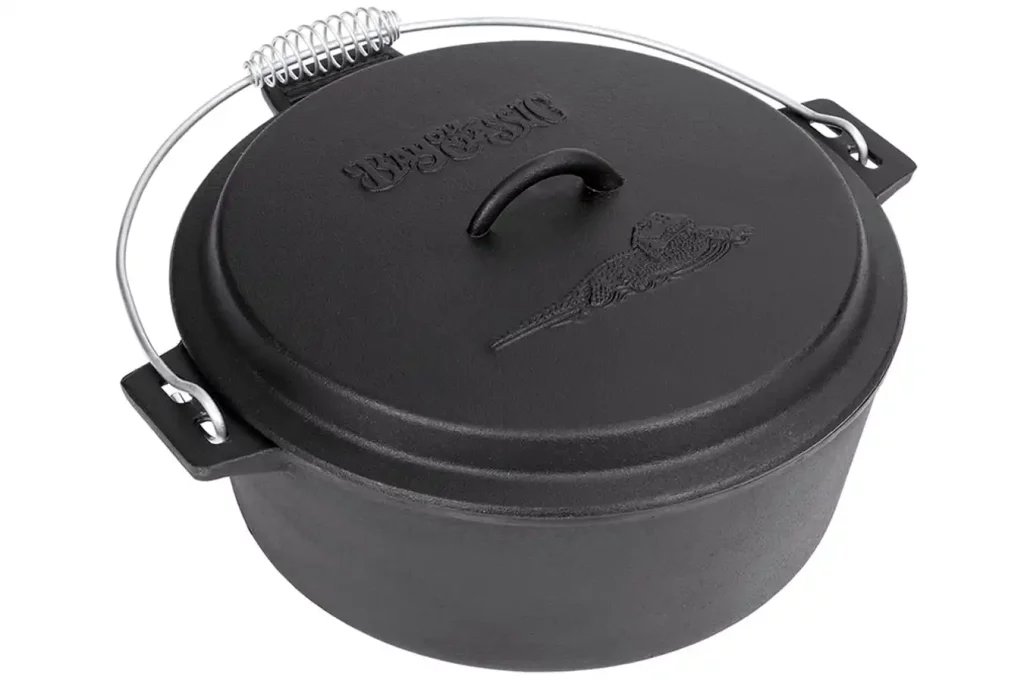Ah, the great outdoors! Nothing beats the thrill of cooking over an open flame, right? Well, you’re in luck, because today we’re diving into the world of campfire cooking tools.
Ever wondered what separates an okay outdoor meal from a truly memorable feast? It all boils down to having the right tools in your campfire cooking kit.
This article aims to be your go-to guide for just that, covering the 5 must-have items you absolutely need. Get ready to elevate your outdoor culinary game to a whole new level! Stick around, and you’ll be a campfire cooking pro in no time.
Why Having a Campfire Cooking Kit is Essential
So, why bother with a specialized cooking kit? Safety first, my friends.
You don’t want to risk burning yourself or worse, starting a forest fire, because you were unprepared.
Plus, having the right tools can make your cooking more efficient.
You can actually focus on that perfect sear instead of worrying about dropping your steak into the fire.
The Difference Between Regular Cooking and Campfire Cooking
Okay, so cooking at home is one thing. You’ve got all your gadgets and gizmos.
But campfire cooking? That’s a whole different beast.
You’re dealing with open flames, uneven heat, and let’s not forget, the great outdoors isn’t exactly a controlled environment.
One moment it’s sunny; the next, you’re cooking in the rain. Having a dedicated campfire cooking kit can bridge that gap.
It prepares you for the variables you can’t control, so you can master the ones you can.
There you go, that’s the first part of our deep dive into campfire cooking kits. What do you think so far? Eager to find out which tools you shouldn’t go camping without? Stay tuned!
1. Cast Iron Skillet: The Versatile Warrior
Oh, the cast iron skillet. This thing is the Swiss Army knife of campfire cooking.
Why?
Well, first off, it’s incredibly durable.
You could probably run it over with a truck and still make breakfast on it the next day.

Different Uses: From Searing to Baking
A cast iron skillet isn’t just for frying eggs or sautéing veggies. Nah, this baby can sear a steak like nobody’s business.
But wait, there’s more.
Ever tried baking cornbread right on the campfire?
The cast iron’s even heat distribution makes it ideal for baking, too.
Care and Maintenance
Now, listen up. A cast iron skillet needs love and care.
Before your first use, you’ll want to season it.
That means coating it in oil and baking it.
After each use, clean it without soap and re-oil it.
Trust me, a well-maintained cast iron skillet will outlast most relationships.
2. Campfire Grill Grate: Mastering the Basics
Let’s move on to the grill grate. Think of it as your campfire cooking foundation.
A sturdy grill grate can hold anything from fish to a big ol’ slab of ribs.

Types of Grill Grates and What to Consider When Buying
There are a few options when it comes to grill grates.
You’ve got your basic steel grates, and then you have your high-end stainless-steel versions.
Now, if you’re a weekend warrior, a basic grate will do.
But if you’re out there every chance you get, consider splurging on a stainless-steel grate for longevity.
How to Properly Use a Grill Grate
Alright, so you’ve got your grill grate. But, don’t just slap it on the fire.
First, let it heat up—this helps with even cooking.
Also, brush it with some oil to prevent sticking.
And remember, always use heat-resistant gloves or tongs to adjust it.
Last thing you need is a branded palm, am I right? Know more about campfire cooking accessories for your next camping trip.
3. Fire-Resistant Gloves: Handling with Care
Ever tried flipping a burger over a campfire with your bare hands?
Yeah, didn’t think so.
You need a sturdy pair of fire-resistant gloves.
It’s not just about not getting burned; it’s also about control and safety.
See, with the right gloves, you can manipulate your cooking tools and food with finesse.

Materials to Consider
Okay, let’s talk materials. Leather is a classic but tends to stiffen over time.
Silicone is flexible but might not offer the dexterity you need.
My go-to?
A combination of aramid fibers and silicone for grip and heat resistance.
Best Practices for Using Fire-Resistant Gloves
You got your gloves? Great!
Don’t just shove your hands in and go poking the fire.
Firstly, make sure they fit snug but not too tight.
If you’re sharing them, make sure everyone knows which pair is the ‘community pair’—no one likes sweaty surprises.
And hey, keep them dry; wet gloves can transmit heat super fast.
4. Long-Handled Tongs: Your Best Friend for Grilling
Short tongs are for salads, long-handled tongs are for fires. No, really, length does matter here.
With a longer reach, you’re less likely to singe your eyebrows off.
And let’s face it, your food is less likely to end up in the fire too.

Material Considerations
Metal is the go-to for tongs. Sure, plastic might be lighter, but let’s not kid ourselves; those will melt faster than marshmallows.
If you can find stainless steel with a silicone grip, you’re golden.
The Different Kinds of Tongs and Their Uses
Not all tongs are created equal. Some have scalloped edges for better grip, while others are more like giant tweezers.
Use the scalloped ones for larger cuts of meat or veggies.
The tweezer-like ones are perfect for turning smaller, delicate items like shrimp or asparagus spears.
5. Dutch Oven: For the One-Pot Wonders
If you’re anything like me, you live for those one-pot meals.
Dutch ovens are your culinary canvas when you’re in the wild.
Seriously, it’s like bringing your kitchen stove to the campfire.
Soups, stews, even baked goods; this is your do-it-all piece of cookware.
No campfire cooking kit is complete without it.
Types of Dutch Ovens Suitable for Campfires
Now, let’s talk specifics. You have cast iron and you have aluminum.
Cast iron is heavy but retains heat like a champ.
Aluminum is lighter but you might find hotspots.
For me? It’s cast iron, all day.
Just make sure it has legs to sit above the coals and a tight-fitting lid.
Classic Recipes You Can Try
Ever had a campfire lasagna?
How about some Dutch oven cornbread?
Or maybe you’re a dessert person—ever try baking brownies in the woods?
If you haven’t, let me tell you, you’re missing out!
A Dutch oven makes these culinary feats possible.
Beyond the Essentials: Honorable Mentions
I know, I know, you’re probably thinking, “Isn’t five tools enough?”
Well, sometimes you just want that extra dash of pizzazz or convenience in your outdoor cooking.
Collapsible Campfire Tripod
Think of this as your cooking chandelier. Hang a pot, a kettle, or even that Dutch oven for a different cooking dynamic. Super versatile and collapsible for easy storage.
Heavy-Duty Aluminum Foil
Hear me out: it’s not just for wrapping leftovers.
You can create cooking packets for fish or veggies.
Even use it as a makeshift lid for your skillet.
If you’re an outdoor chef, this is your Swiss army knife.
Portable Spice Kit
Because no one wants bland food.
Create a small spice kit with your go-to seasonings.
Salt, pepper, garlic powder, a dash of cayenne for some heat.
Trust me, your taste buds will thank you.
Alright, I’m eager to see what’s on your list! What else are you curious about when it comes to making your campfire cooking epic? Let’s keep the conversation going.
Learn more for better camping from the campfire essentials guides.
How to Pack Your Campfire Cooking Kit
So, you’ve got all these fantastic tools, but now what?
Packing them efficiently is just as important.
Because no one wants to juggle a cast-iron skillet while trekking five miles.
And let’s be real, the way you pack for a backpacking trip isn’t going to cut it for car camping.
Best Ways to Organize
First thing’s first, prioritize.
Your cast iron skillet or Dutch oven can serve multiple purposes, so maybe you don’t need that extra saucepan.
Wrap the smaller items like your spice kit or tongs in a cloth and tuck them inside the larger pots.
Space saved is space earned!
For the love of organization, use a dedicated cooking bag or box.
It not only keeps things neat but also prevents your tools from becoming travel-weary too soon.
Little hack? Add some padding or bubble wrap around the more fragile items, like your portable spice kit.
Considerations for Different Types of Camping Trips
Alright, here’s where the rubber meets the road. Or the hiking boot meets the trail, if you will.
Backpacking
When every ounce counts, you’ve got to be picky. Focus on multi-use items like a single pot or a compact grill grate.
Think lightweight and collapsible, like aluminum cookware or a small bag of essential spices.
Oh, and don’t forget those fire-resistant gloves; they’re not just for cooking!
Car Camping
Car camping is like the all-you-can-eat buffet of camping. Room for that extra grill grate or even a collapsible tripod?
You bet.
This is where your Dutch oven can shine in all its one-pot glory.
So, what will you bring on your next outdoor culinary adventure? I’m all ears!
Seasoning and Preparing Your Tools
You wouldn’t jump into a marathon without warming up, right?
Same goes for your cooking tools.
A well-seasoned skillet or a clean grill grate makes all the difference.
So how do we get them ready for action?
Let’s find out!
How to Season Your Cast Iron
If you’re new to the cast iron game, seasoning is the term for the process that basically makes your skillet non-stick.
Start with a clean, dry skillet.
Rub it all over with a light layer of vegetable oil or shortening.
Pop it in a 375°F oven for an hour, upside down.
Congrats, you just seasoned your skillet!
Repeat this process every so often to keep your skillet in peak condition.
Remember, cast iron is like a pet, it needs some TLC to give you its best.
Cleaning and Preparing Other Tools
Don’t forget the rest of your squad!
Grill grates should be scrubbed free of old gunk; soap and a good wire brush are your best friends here.
As for those long-handled tongs, a simple wash should do the trick.
Fire-resistant gloves?
Check for any wear and tear and, if they’re machine washable, give ’em a spin in the laundry.
FAQs
Can you use regular kitchen tools for campfire cooking?
Regular kitchen tools are generally not designed for the heat and conditions of a campfire; it’s best to use tools made specifically for outdoor cooking.
What’s the best way to clean your tools while camping?
Cleaning with biodegradable soap and hot water is ideal; if that’s not possible, wiping them down thoroughly with a damp cloth works as a quick fix.
How do you control the heat while cooking on a campfire?
Control the heat by moving the cooking grate or skillet closer or farther from the flames, and make use of hot and cool zones within the fire.
What are the best materials for campfire cooking tools?
Stainless steel, cast iron, and heat-resistant silicone are popular materials known for their durability and heat resistance.
How do I maintain my campfire cooking tools?
Regular cleaning and proper storage are essential; additionally, cast iron tools should be seasoned regularly to maintain their non-stick properties.
Is it safe to use regular kitchen gloves for campfire cooking?
Using regular kitchen gloves is not recommended due to their lack of fire resistance; invest in a pair of fire-resistant gloves for safety.
Conclusion
Phew, that was a lot! But trust me, having the right tools can elevate your campfire cooking from good to legendary.
We covered essentials like the versatile cast iron skillet, the basic-yet-crucial grill grate, the ever-important fire-resistant gloves, those handy long-handled tongs, and the one-pot marvel that is the Dutch oven.
If you’re feeling a little extra, throw in a collapsible campfire tripod, some heavy-duty aluminum foil, and a portable spice kit.
The right tools not only make cooking easier but also make it more fun. So pack wisely, season well, and cook with love. Happy trails and even happier cooking!

